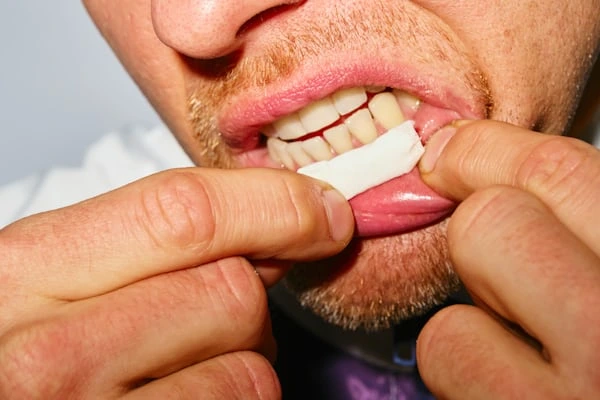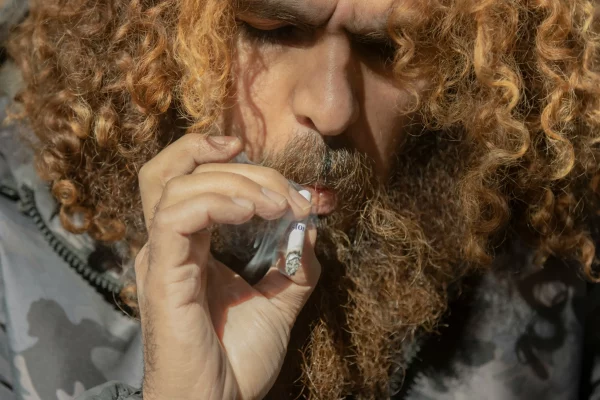Teeth whitening frequently represents a primary concern for individuals who smoke and wish to address the persistent discoloration caused by nicotine. While tobacco-related stains are notably resilient, advances in contemporary whitening techniques, ranging from professional, in-office procedures to specialized over-the-counter products, have demonstrated measurable improvements in dental aesthetics. The process of achieving a brighter smile as a smoker involves selecting the most suitable method, understanding the unique challenges presented by nicotine-induced stains, and adhering to consistent maintenance between teeth whitening sessions.
This article provides an in-depth analysis of why stains from smoking present distinct difficulties, evaluates the relative effectiveness of various teeth whitening strategies, and offers practical advice for prolonging results, even for those who choose not to cease tobacco use entirely.
How Smoking Impacts Tooth Color

Smoking doesn’t just affect your lungs and heart, it takes a serious toll on your smile. One of the most visible consequences is tooth discoloration, often turning teeth yellow, brown, or even gray over time. This staining isn’t just surface-level; the tar and nicotine in tobacco products penetrate the porous enamel, making the stains stubborn and difficult to remove with basic brushing. Smokers also produce less saliva, which means more bacteria and staining compounds linger in the mouth longer. Over time, this combination dulls the natural brightness of your teeth and accelerates enamel wear.
Unfortunately, even teeth whitening treatments may not fully reverse the deep discoloration caused by long-term tobacco use. That’s why prevention and early intervention are key. Understanding how smoking alters tooth color can help you take action before the damage becomes more difficult to correct.
Why Nicotine and Tar Stain Teeth Deeply
Nicotine and tar found in cigarettes, cigars, and pipes introduce persistent brown pigments that embed themselves within the enamel’s microscopic crevices. Unlike more superficial stains caused by substances such as coffee or wine, tobacco-related discoloration penetrates deeper into the tooth structure and intensifies with each instance of smoking. Over time, this repeated exposure results in teeth developing a pronounced yellow, brown, or even grayish coloration, which often persists despite consistent oral hygiene practices.
Difference Between Cigarette and Vape Stains
While traditional cigarettes are well-known for causing conspicuous brown staining, vaping isn’t entirely harmless either. It tends to leave behind a subtler, grayish residue that can accumulate on both enamel and soft tissues, dulling the natural whiteness of teeth. Discontinuing smoking does not automatically eliminate the risk of discoloration from vape residue. Consistent cleaning and whitening practices remain essential to maintain dental aesthetics.
While traditional cigarettes are well-known for causing conspicuous brown staining, vaping isn’t entirely harmless either. It tends to leave behind a subtler, grayish residue that can accumulate on both enamel and soft tissues, dulling the natural whiteness of teeth. Discontinuing smoking does not automatically eliminate the risk of discoloration from vape residue. Consistent cleaning and whitening practices remain essential to maintain dental aesthetics.
How Quickly Smoking Reverses Teeth Whitening Effects
Resuming smoking shortly after a teeth whitening procedure often leads to a rapid return of discoloration, sometimes within mere days. Individuals who smoke daily may experience a loss of one to two shade levels per week if preventive measures are not employed. Consequently, ongoing maintenance or follow-up treatments become crucial for sustaining the whitening effects over time.
Teeth Whitening Treatments That Work for Smokers

Smokers often require more intensive whitening treatments due to the deep-set stains left behind by tar and nicotine. Over-the-counter teeth whitening toothpaste and strips may offer minimal improvement, but professional treatments are typically needed for noticeable results. In-office teeth whitening procedures use stronger peroxide-based gels and often incorporate heat or light to break apart stubborn discoloration more effectively. For long-time smokers, custom take-home trays provided by a dentist can also help especially when used consistently for touch-ups. Some patients benefit from a combination of in-office and at-home treatments to achieve and maintain a brighter shade.
However, results may vary depending on how long you’ve smoked and how much enamel has been affected. Regular dental cleanings are essential, too, as they remove surface buildup and improve the effectiveness of any teeth whitening method. Quitting smoking altogether will not only preserve your results but also protect your oral and overall health moving forward.
Is Professional Whitening More Effective for Smokers?
Certainly. Professional in-office teeth whitening treatments utilize high-concentration hydrogen peroxide—typically ranging from 25% to 40%. This solution is often activated with light or heat to accelerate the breakdown of stubborn chromogens responsible for discoloration. Dentists also employ protective barriers to shield the gums and may pre-treat the enamel to optimize absorption of the whitening agent. As a result, a single session can produce an improvement of six to ten shades, which far exceeds the results generally achievable with over-the-counter kits.
Teeth Whitening Kits and Toothpastes That Target Tobacco Stains
Custom dental trays containing 10–16% carbamide peroxide, when prescribed by a dentist, provide a controlled and gradual teeth whitening process typically over a two-week period. For ongoing maintenance, toothpastes formulated with low-abrasion silica and mild peroxide effectively address new surface stains without causing excessive wear. It is especially important for individuals who smoke to avoid abrasive whitening powders, as these can further compromise enamel already affected by tobacco use.
Can Smokers Use Teeth Whitening Strips or Pens?
Whitening strips and pens may serve as modest adjuncts in teeth whitening regimens, though their efficacy is limited by lower peroxide concentrations and the potential for uneven application—factors that contribute to slower improvement in cases of pronounced staining. For optimal safety, individuals should select reputable, ADA-approved products and adhere strictly to usage guidelines to minimize risks such as gum irritation or enamel erosion.
Maintaining Results While You Still Smoke
If you’re still smoking but want to maintain your teeth whitening results, it’s essential to be diligent with daily oral care. After each cigarette, rinse your mouth with water to help remove staining substances before they adhere to your enamel. Select a low-abrasion teeth whitening toothpaste and use it once or twice daily, brushing gently with a soft-bristled toothbrush to minimize enamel erosion. Chewing sugar-free gum after smoking can also be beneficial, since it increases saliva production, which helps neutralize acids and decrease stain accumulation.
Scheduling professional dental cleanings every three to four months is recommended, as these appointments can remove surface stains before they become more pronounced. Try to avoid combining smoking with beverages like coffee, red wine, or dark sodas, as these drinks are known to intensify discoloration. If you’re using whitening trays or strips, it’s important to follow your dentist’s instructions closely and allow sufficient time between treatments to reduce the risk of tooth sensitivity. With consistent and careful oral hygiene habits, it is possible to prolong the effects of whitening treatments, even if you continue to smoke.
Tips for Reducing New Stains Without Quitting
Maintaining dental aesthetics while continuing to smoke does require a bit of diligence. Rinsing with water after each cigarette can be surprisingly effective; it helps remove surface residue before it has a chance to adhere to the enamel. For individuals who also consume coffee, soda, or other pigmented beverages, drinking through a straw may reduce direct exposure of these staining agents to the anterior teeth.
Consistent oral hygiene is crucial—brushing and flossing twice daily is strongly recommended to eliminate plaque and staining compounds before they become problematic. Opting for a soft-bristled toothbrush is advisable, as it cleans adequately without causing undue wear to the enamel. While these interventions do not substitute for smoking cessation, they can meaningfully mitigate some of the cosmetic effects associated with tobacco use.
Oral Hygiene Products That Help Smokers Maintain Whitening
Maintaining oral health while continuing to smoke requires careful selection of dental care products. Whitening toothpastes formulated with silica can effectively remove surface stains, while fluoride plays a crucial role in reinforcing enamel that may have been compromised. For individuals experiencing sensitivity following whitening treatments, the use of desensitizing gels is advisable—they provide relief and support adherence to regular oral hygiene routines.
The inclusion of an antimicrobial mouthwash is also beneficial, as it helps minimize plaque accumulation and addresses bacteria associated with staining and periodontal concerns. Collectively, these products contribute to improved oral cleanliness and appearance, offering some mitigation of tobacco’s detrimental effects on dental health.
How Often Smokers Should Touch Up Teeth Whitening
For individuals who smoke heavily, it is typical to require touch-up whitening treatments every three to six months due to increased staining and fading. In-office teeth whitening procedures are generally recommended every six months, with the use of at-home whitening kits in the interim to help maintain brightness. To effectively monitor changes and determine when another session is necessary, it is advisable to document shade levels over time, such as by keeping a log or recording notes.
Finding Teeth Whitening Near Me for Tobacco Stains
When addressing tobacco stains on teeth, it is crucial to select a dental provider with experience in treating significant discoloration. Over-the-counter whitening products are generally insufficient for such cases; instead, professional options such as in-office bleaching procedures or custom-made whitening trays should be prioritized, as they tend to yield more effective results.
Prospective patients are encouraged to research dental clinics by reviewing testimonials or contacting offices directly to determine their familiarity with whitening treatments for smokers. It is also advisable to inquire whether the provider offers an initial consultation to assess the severity of staining and recommend a tailored treatment plan.
Many dental practices present comprehensive packages that include cleanings, teeth whitening procedures, and ongoing maintenance, which can be particularly beneficial for individuals who continue to use tobacco products. Ultimately, seeking care from a qualified cosmetic dentist ensures that treatment is customized to achieve optimal and lasting results, even if the patient’s smoking habits persist.
Why Graham Park Dental Is Trusted by Smokers Seeking a Brighter Smile
Graham Park Dental employs a multifaceted approach to teeth whitening, incorporating in-office chairside procedures, personalized take-home trays, and enamel-safe polishing powders. For patients who continue to smoke, the practice provides specialized desensitizing gels designed to minimize discomfort. Additionally, they emphasize responsible follow-up scheduling to ensure optimal results. Patient testimonials frequently mention significant improvements in tooth shade and note the approachable, non-intimidating atmosphere maintained by the staff.
Frequently Asked Questions (FAQs)
1. Can smoking ruin whitening results quickly?
Yes, tobacco pigments are especially stubborn and can dull whitening results within just a few days if smoking resumes right away. However, consistent aftercare can significantly slow this relapse. Rinsing with water after each cigarette, brushing regularly with whitening toothpaste, and using mouthwash help reduce surface staining. Avoiding other dark-colored beverages like coffee or red wine during the first 48 hours after whitening also helps protect enamel while it’s still porous. Scheduling a follow-up plan such as touch-up treatments every few months can extend your results and keep your smile brighter longer. With the right habits, even smokers can enjoy a noticeable and lasting improvement in tooth color.
2. What’s the best whitening method for long-time smokers?
For smokers, the most effective whitening approach often combines a professional in-office session with a dentist-prescribed take-home tray. The high-concentration peroxide used in the clinic breaks down deeply embedded stains caused by tobacco. Once initial brightness is restored, custom trays with lower-strength gel help maintain those results gradually at home. Between visits, over-the-counter whitening toothpaste and occasional use of whitening strips can help manage minor surface stains. This layered strategy balances powerful results with long-term upkeep. With consistency, even long-time tobacco users can achieve and preserve a noticeably whiter smile.
3. Can I whiten my teeth if I still smoke every day?
Yes, but it’s important to be realistic and committed to maintenance. Smokers can achieve noticeable whitening results, but it takes consistent effort to preserve them. This means using specialized whitening toothpaste daily, rinsing or brushing after each cigarette, and scheduling regular dental checkups. Your dentist may also suggest desensitizing treatments or fluoride applications to protect enamel throughout the process. While results may not last as long as for non-smokers, a diligent care routine can still keep your smile significantly brighter. Long-term success comes down to combining effective treatments with everyday stain prevention.
4. Are whitening treatments safe for damaged smoker’s enamel?
Teeth whitening is usually safe for smokers when performed under the supervision of a dental professional. Before starting treatment, dentists assess the health of your enamel and gums to ensure you’re a good candidate. They can adjust the peroxide concentration, apply protective barriers to sensitive areas, and recommend remineralizing products to strengthen enamel. This careful approach helps minimize side effects like sensitivity or irritation. On the other hand, unsupervised self-treatments—especially if overused—can wear down already compromised enamel and lead to discomfort. For the safest and most effective results, always consult a dentist before starting any whitening routine.
5. How long do results last for smokers compared to non-smokers?
Smokers typically experience faster color fading after whitening treatments—often within just 2 to 3 months—due to frequent exposure to staining agents like tar and nicotine. In contrast, non-smokers may maintain their whitening results for 6 to 12 months with standard care. However, with diligent oral hygiene and scheduled touch-up treatments, smokers can achieve similar long-term outcomes. Using whitening toothpaste, rinsing after smoking, and avoiding additional staining foods or drinks can significantly slow discoloration. Custom take-home trays also help maintain brightness between professional visits. With commitment to upkeep, smokers can enjoy a noticeably whiter smile over time, just like non-smokers.
Ready to reverse nicotine stains and reveal a brighter smile? Schedule a teeth whitening consultation with Graham Park Dental today. Our team specializes in tobacco-safe treatments, from powerful in-office solutions to custom at-home maintenance plans. Whether you’re a long-term smoker or vaping occasionally, we’ll help you choose an approach that delivers results and preserves enamel… all with understanding and no judgment. Book now and smile brighter with confidence.


